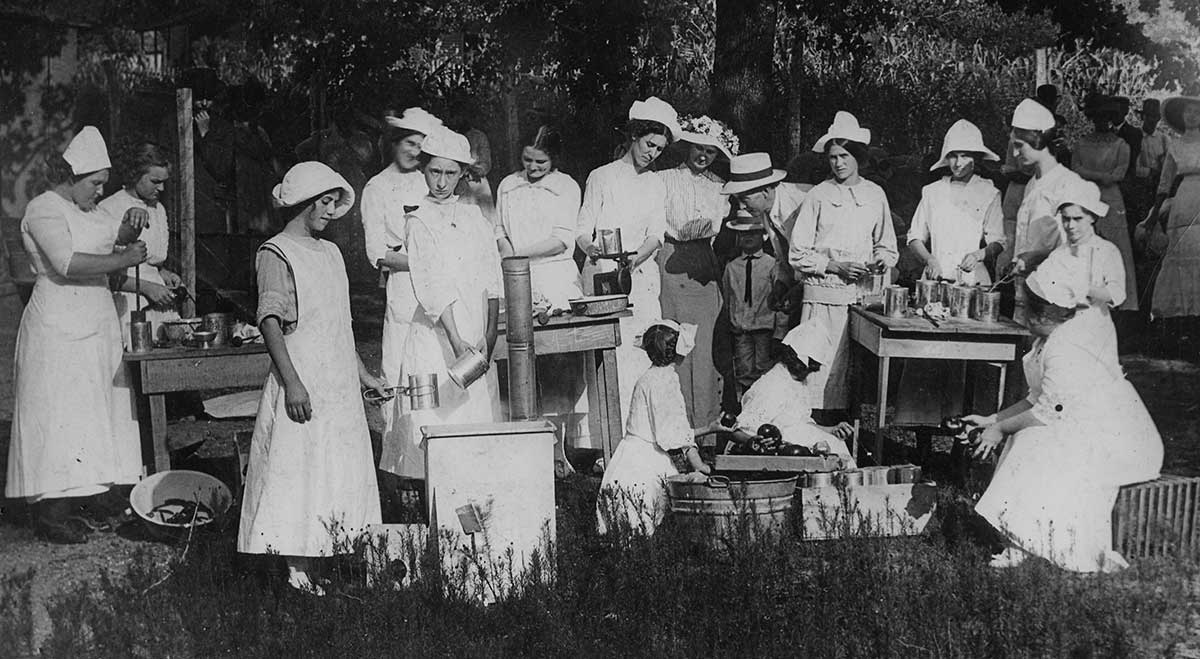In 1859, US Representative Justin Morrill had a big idea that helped shape the future of Tennessee and the rest of the nation.
His idea? Higher education should be available to everyone.
President Abraham Lincoln signed into law the Morrill Act of 1862, which established land-grant colleges to teach agriculture and the mechanical arts to anyone who desired to learn, not just the privileged.
The spirit of the “people’s colleges” continues today through teaching, research, and extension at the University of Tennessee, which is one of 107 land-grant institutions in the country.
Though the act was made law in 1862, the Civil War and Tennessee’s secession from the Union prevented the university from being established as a land-grant institution for another seven years.
In 1794—nearly a hundred years before the Morrill Act and two years before Tennessee became a state—UT was known as Blount College. After two more name changes (East Tennessee College in 1820 and East Tennessee University in 1840) and the rehabilitation of a war-ravaged campus, the Morrill Act finally took effect in 1869.
The state legislature designated the university as the state’s federal land-grant institution, which finally allowed the school to benefit from the Morrill Act with the purchase of nearly 300 acres of land. In 1879, the state legislature changed the school’s name to its present name of the University of Tennessee, thus beginning UT’s modern era.
“The Morrill Act put UT on the road to becoming a modern university,” says Chancellor Jimmy G. Cheek. “That legislation helped us grow and expand. The College of Agricultural Sciences and Natural Resources, AgResearch, the College of Veterinary Medicine and UT Extension are all direct results of the Morrill Act and other legislation.”
The Impact

Early UT students learning home economics
Collectively, these organizations that grew out of the Morrill Act (along with the Hatch Act of 1887 and the Smith-Lever Act of 1914) represent a significant percentage of the current UT.
With an average enrollment of more than 1,000 students each year, the College of Agricultural Sciences and Natural Resources prepares undergraduate and graduate students for careers in agriculture and natural resources. UT AgResearch ensures that Tennesseans have a safe, affordable, and nutritious food supply, while returning $500 million to the state economy each year.
The College of Veterinary Medicine (CVM) is one of only twenty-eight veterinary colleges in the nation, graduating nearly 2,000 students since 1974. Nearly half of all licensed veterinarians in Tennessee are CVM alumni.
UT’s Extension agency delivers educational programs and research-based information to Tennesseans through ninety-five county offices, with nearly five million contacts annually.
In the “mechanical arts,” UT’s College of Engineering consists of eight departments of study and seven nationally renowned research centers. The college boasts partnerships with Oak Ridge National Laboratory, among other organizations.
The College of Engineering produces outstanding graduates like Min Kao, one of the founders of the global positioning system Garmin, and Mark Dean, who holds three of the original nine patents on the standard IBM personal desktop computer.
The University of Tennessee continues to embrace the land-grant mission and ideals by placing high importance on research and innovation as well as the democratization of higher education through financial aid and scholarships.
A plaque commemorating the signing of the Morrill Act was dedicated on November 3 at UT.
 This story is part of the University of Tennessee’s 225th anniversary celebration. Volunteers light the way for others across Tennessee and throughout the world.
This story is part of the University of Tennessee’s 225th anniversary celebration. Volunteers light the way for others across Tennessee and throughout the world.
Learn more about UT’s 225th anniversary

